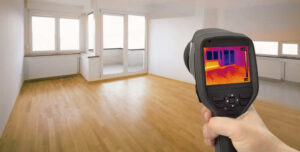What're your opinions about Finding hidden leaks?

Early discovery of dripping water lines can minimize a prospective catastrophe. Some tiny water leakages may not be visible.
1. Analyze the Water Meter
Every house has a water meter. Examining it is a guaranteed way that aids you discover leakages. For starters, switch off all the water sources. Make certain nobody will certainly flush, utilize the tap, shower, run the washing equipment or dishwashing machine. From there, most likely to the meter and also watch if it will alter. Given that no person is utilizing it, there must be no motions. That suggests a fast-moving leak if it relocates. Furthermore, if you identify no changes, wait a hr or 2 as well as check back once more. This means you might have a slow-moving leakage that might even be underground.
2. Examine Water Intake
Examine your water expenses as well as track your water usage. As the one paying it, you need to notice if there are any type of disparities. If you detect sudden changes, regardless of your usage being the same, it implies that you have leakages in your plumbing system. Bear in mind, your water expense need to fall under the same range every month. An unexpected spike in your costs indicates a fast-moving leakage.
A consistent rise every month, also with the same routines, reveals you have a slow leak that's likewise gradually rising. Call a plumber to thoroughly inspect your home, particularly if you really feel a warm area on your floor with piping underneath.
3. Do a Food Coloring Examination
When it concerns water consumption, 30% originates from commodes. Test to see if they are running properly. Decrease specks of food color in the tank and wait 10 minutes. There's a leak in between the tank and also dish if the shade in some way infiltrates your dish during that time without flushing.
4. Asses Exterior Lines
Don't neglect to check your outdoor water lines also. Must water leak out of the link, you have a loose rubber gasket. One tiny leakage can waste tons of water as well as surge your water expense.
5. Examine the circumstance and examine
Property owners must make it a behavior to check under the sink counters as well as also inside cupboards for any kind of bad odor or mold and mildew development. These two warnings indicate a leakage so punctual focus is required. Doing regular assessments, also bi-annually, can conserve you from a major problem.
Inspect for discolorations and also damaging as a lot of home appliances and pipelines have a life expectancy. If you presume leaking water lines in your plumbing system, do not wait for it to rise.
Early discovery of leaking water lines can reduce a prospective catastrophe. Some tiny water leakages might not be noticeable. Checking it is a proven means that assists you uncover leaks. One tiny leakage can squander heaps of water and increase your water expense.
If you believe dripping water lines in your plumbing system, don't wait for it to intensify.
WARNING SIGNS OF WATER LEAKAGE BEHIND THE WALL
PERSISTENT MUSTY ODORS
As water slowly drips from a leaky pipe inside the wall, flooring and sheetrock stay damp and develop an odor similar to wet cardboard. It generates a musty smell that can help you find hidden leaks.
MOLD IN UNUSUAL AREAS
Mold usually grows in wet areas like kitchens, baths and laundry rooms. If you spot the stuff on walls or baseboards in other rooms of the house, it’s a good indicator of undetected water leaks.
STAINS THAT GROW
When mold thrives around a leaky pipe, it sometimes takes hold on the inside surface of the affected wall. A growing stain on otherwise clean sheetrock is often your sign of a hidden plumbing problem.
PEELING OR BUBBLING WALLPAPER / PAINT
This clue is easy to miss in rooms that don’t get much use. When you see wallpaper separating along seams or paint bubbling or flaking off the wall, blame sheetrock that stays wet because of an undetected leak.
BUCKLED CEILINGS AND STAINED FLOORS
If ceilings or floors in bathrooms, kitchens or laundry areas develop structural problems, don’t rule out constant damp inside the walls. Wet sheetrock can affect adjacent framing, flooring and ceilings.
https://www.servicemasterbyzaba.com/blog/how-to-detect-water-leakage-in-walls/

I was made aware of that article on Locating water leaks from a good friend on a different domain. Those who appreciated our page kindly be sure to share it. Many thanks for your time. Don't forget to check up our website back soon.